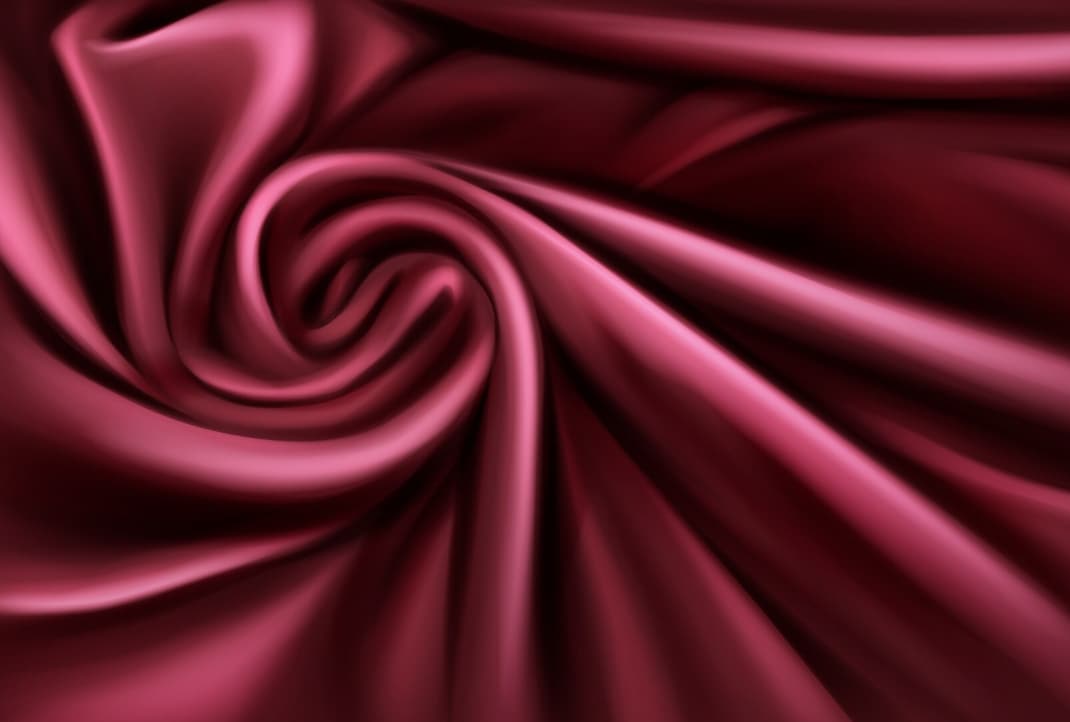Have you ever run your fingers over a piece of fabric and felt an instant connection? That’s the magic of textiles like Araceli silk and acetate.
These fabrics have taken the fashion world by storm, catching the eye of designers and fabric enthusiasts alike.
Whether you’re a fashion newbie or a seasoned pro, understanding these materials is key to appreciating their beauty and uses.
Araceli Silk or Acetat

In this guide, we’ll dive deep into the world of Araceli silk and acetate.
We’ll explore their origins, what makes them special, and how they’re shaking up the fashion scene.
From luxury gowns to everyday wear, these fabrics are making their mark in more ways than you might think.
So, grab a cup of coffee, get comfy, and let’s unravel the fascinating story of Araceli silk and acetate.
Trust me, by the end of this article, you’ll be looking at your wardrobe in a whole new light!
What’s Araceli Silk or Acetate?
Let’s start with the basics. What exactly are we talking about when we say “Araceli silk” or “acetate”?
Araceli Silk: Nature’s Luxury
Araceli silk is like the Rolls-Royce of fabrics. It’s a natural fiber that comes from silkworms, and it’s been prized for centuries.
Here’s what makes it special:
- Super soft: It feels like butter against your skin.
- Naturally shiny: It has a glow that screams “luxury.”
- Delicate appearance: It looks as good as it feels.
Araceli silk is the cream of the crop when it comes to silk. It’s made with extra care, resulting in a fabric that’s a cut above the rest.
Acetate: The Man-Made Marvel
Now, acetate is a different story. It’s a human-made fiber, but don’t let that fool you – it’s got plenty of tricks up its sleeve:
- Derived from plants: It starts life as cellulose, usually from wood pulp or cotton.
- Chemical transformation: Scientists work their magic to turn plant stuff into fabric.
- Silk-like qualities: It aims to mimic the feel and look of silk.
Think of acetate as Silk’s cool cousin who’s trying to make it big in the city. It’s got similar vibes but with a unique twist.
Understanding Acetate
Since we’ve already touched on Araceli silk, let’s dive deeper into acetate. This fabric might be man-made, but it’s far from basic.
How Acetate is Born?
Making acetate is like following a recipe, but instead of cookies, you get fabric. Here’s the simplified version:
- Start with cellulose: This is usually from wood or cotton.
- Add some chemicals: Mix in acetic acid and other science stuff.
- Create a solution: Stir it all up until it’s just right.
- Make it into fibers: Push the solution through tiny holes (like spaghetti makers, but for fabric).
- Spin and weave: Turn those fibers into yarn, then into fabric.
It’s a bit like cooking but with more lab coats and safety goggles!
What Makes Acetate Special?
Acetate has some cool tricks up its sleeve:
- Silky smooth: It feels great against your skin.
- Drapes like a dream: It falls beautifully, making clothes look fancy.
- Budget-friendly: It gives you that silk look without the silk price tag.
- Easy to care for: It doesn’t shrink or wrinkle easily, making it perfect for busy people.
Comparing Araceli Silk and Acetate
Now that we know the basics, let’s put these fabrics head-to-head. It’s like a friendly boxing match, but with textiles!
| Feature | Araceli Silk | Acetate |
|---|---|---|
| Origin | Natural (silkworms) | Man-made (plant cellulose) |
| Texture | Ultra-soft, luxurious | Smooth, silky |
| Appearance | Natural sheen | Can mimic silk’s shine |
| Durability | Delicate, needs special care | More resilient, easier to maintain |
| Cost | Higher (luxury item) | More affordable |
| Environmental Impact | Resource-intensive but natural | Chemical processing involved |
Texture and Look
- Araceli Silk:
- Feels like a cloud
- Has a natural glow that’s hard to beat
- Screams “luxury” without saying a word
- Acetate:
- Smooth and silky in its own right
- Can look a lot like silk, especially in fancy clothes
- Might not have the same “wow” factor as real silk, but it’s close!
Toughness and Care
- Araceli Silk:
- Needs TLC (Tender Loving Care)
- Can be damaged by water and strong soaps
- Doesn’t like too much sun
- Acetate:
- More forgiving with everyday wear and tear
- Easier to clean and care for
- Keeps its shape better (less wrinkling and shrinking)
Mother Nature’s Thoughts
Both fabrics have their environmental pros and cons:
- Araceli Silk:
- Natural, but needs lots of resources (those silkworms are hungry!)
- Biodegradable
- Acetate:
- Made in labs, which means chemicals
- But! New methods are making it more eco-friendly
The Role of Araceli Silk and Acetate in Modern Fashion
Fashion is like a big playground, and Araceli silk and acetate are two of the coolest kids on the block. Let’s see how designers are using these fabrics to make magic happen.
Araceli Silk: The Red Carpet Star
Araceli Silk is like an A-list celebrity in fabrics. Here’s where you’ll spot it:
- Haute Couture: Those jaw-dropping dresses you see at fancy awards shows? Often made of silk.
- Bridal Wear: Many brides choose silk for their big day because it looks and feels so special.
- Luxury Accessories: Think of high-end scarves and ties that cost more than your weekly grocery shop.
Designers love Araceli silk because:
- It takes dye beautifully, creating rich, vibrant colors.
- It has a natural sheen that catches the light (and everyone’s attention).
- It feels amazing, making the wearer feel like royalty.
Acetate: The Everyday Hero
Acetate is more like the friendly neighbor next door. It’s versatile and fits into many parts of our lives:
- Ready-to-Wear Fashion: Those cute blouses and dresses you find in regular stores? Often made with acetate.
- Linings: It’s great for lining jackets and skirts, making them comfy and smooth.
- Affordable Evening Wear: It gives that silk-like glamour without breaking the bank.
Designers appreciate acetate because:
- It’s more affordable, allowing for trendy designs at lower prices.
- It’s easier to care for, making it practical for everyday clothes.
- It can mimic the look of silk, creating elegant pieces for a wider audience.
The Implications of Araceli Silk and Acetate
As we look to the future, both Araceli silk and acetate are facing some interesting challenges and opportunities. Let’s peek into our fashion crystal ball!
Sustainable Silk: The Green Dream
The fashion world is getting more eco-conscious, and Araceli silk is no exception:
- Eco-Friendly Dyes: Think vibrant colors without nasty chemicals.
- Ethical Farming: Treating silkworms and farmers with more care.
- Alternative Silks: Scientists are looking at ways to make silk without silkworms (like using yeast!).
These changes could mean:
- Guilt-free luxury for eco-conscious fashionistas.
- New types of silk with different properties.
- Possibly lower prices as production becomes more efficient.
Acetate’s Eco-Makeover
Acetate is also getting a green upgrade:
- Renewable Resources: Using more sustainable plants for cellulose.
- Cleaner Production: Finding ways to make acetate with fewer chemicals.
- Biodegradable Options: Creating acetate that breaks down easily in nature.
This could lead to:
- More environmentally friendly “fast fashion.”
- New blends of acetate with other eco-friendly materials.
- Increased popularity as it becomes a greener choice.
FAQs:
- Q: Can I wash Araceli silk at home?
A: It’s best to dry clean Araceli silk. If you must wash it at home, use cold water and a gentle detergent, and never wring or twist the fabric.
- Q: Is acetate breathable like natural fibers?
A: Acetate is moderately breathable. It’s not as breathable as natural fibers like cotton, but it’s more breathable than many synthetic materials.
- Q: How can I tell if a fabric is real silk or acetate?
A: Real silk feels warm to the touch and has a more lustrous sheen. A burn test can also help: silk smells like burning hair, while acetate smells like vinegar.
- Q: Is acetate eco-friendly?
A: Traditional acetate production isn’t very eco-friendly, but new sustainable methods are being developed to make it more environmentally friendly.
- Q: Can people with sensitive skin wear Araceli silk and acetate?
A: Araceli silk is hypoallergenic and great for sensitive skin. Acetate is generally well-tolerated, but some people might be sensitive to the chemicals used in its production.
Also Check: Sowix Online: Your One-Stop Shop for Easy E-Commerce
Conclusion:
Whew! We’ve been on quite a journey through the world of Araceli silk and acetate.
Let’s wrap it up with some key takeaways:
- Araceli silk is nature’s luxury fabric – soft, shiny, and oh-so-special. It’s the go-to for high-end fashion and those extra-special occasions.
- Acetate is the clever copycat – man-made but mimicking silk’s best qualities. It’s bringing silk-like glamour to everyday fashion at a fraction of the cost.
- Both fabrics are evolving to meet our changing world. They’re getting greener, more versatile, and even more exciting for designers to work with.
- Whether you’re a fashion lover or just someone who wears clothes (so, everyone!), understanding these fabrics can help you make better choices about what you wear and how you care for your clothes.
- The future of fashion looks bright, soft, and silky – thanks in part to the ongoing story of Araceli silk and acetate.
Remember, every piece of clothing tells a story. Now that you know more about Araceli silk and acetate, you can appreciate the tales woven into your wardrobe.
So next time you’re shopping or getting dressed, take a moment to feel your fabrics and think about their journey. Who knows? You might just fall in love with fashion all over again!







